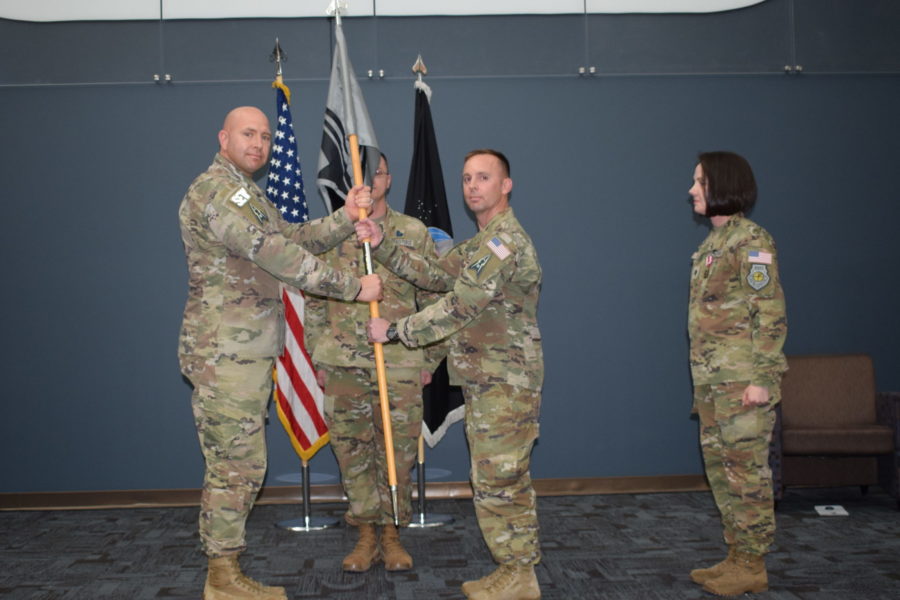A single “hooah” filled the atrium of the Electromagnetic Warfare Facility at Peterson Space Force Base, Colo., on June 15, where a former Army officer received his first salute as commander of the USSF’s 4th Electromagnetic Warfare Squadron.
Lt. Col. Nicholas R. Shaw became the first transferring officer from a prior service besides the Air Force to assume command of a Space Force unit. (When the Naval Satellite Operations Center became the 10th Space Operations Squadron on June 6, Navy Capt. Jason Parish ceded command to Space Force Lt. Col. Jason Sanders.)
The 4th EWS operates the Space Force’s only overtly offensive weapon, the Counter Communications System, or CCS, which interferes with enemy satellites. Col. Christopher A. Fernengel, commander of Space Delta 3—roughly equivalent to a wing commander in the Air Force—presided over the change of command June 15. He said electromagnetic warfare is “the decisive advantage” in war and characterized the squadron’s role as being “to ensure … threats are crushed” that would try to destroy U.S. space-based command and control.
A Guardian for only six months Shaw assumed command from a prior Air Force officer, USSF Lt. Col. Kara L. Sartori. She goes on to become the operations officer for the Space Force component of U.S. European Command.
But even while still in the Army, Shaw had a hand in shaping the Space Force from the start, and the interservice aspects of the unit’s people and its mission provided a theme for the ceremony.
A graduate of the U.S. Military Academy at West Point, N.Y., Shaw served 15-and-a-half years in the Army, including three years deployed to Iraq and Afghanistan. He was assigned to the Defense Intelligence Agency in Washington, D.C., when—with a background in electronic warfare and signals intelligence—he heard the brand-new Space Force needed people from other services to help stand it up from its headquarters in the Pentagon.
“My hand went right up in the air,” Shaw recalled in an interview after the 4th EWS change of command ceremony. He had recognized “an incredible opportunity” to start a new service “from the ground up” and worked in a few different divisions as the headquarters took shape. That blank slate “really lets you see the impact of the things you do,” he said.
The foresight on the part of the Space Force to bring Army, Navy, and Marine Corps troops into the fold has paid off, Shaw said. Now it’s “become more combat-focused than it used to be” and “able to integrate with these services better.”
A few Air Force name tapes distinguished the Airmen from the Guardians delivering Sartori’s final salute and Shaw’s first, and one of Shaw’s fellow former Soldiers issued the “hooah.” Uniquely among Space Force units, the 4th EWS is likely to interact with as many services as its members came from. Proximity plays a role in operating the CCS, so 4th EWS members forward-deploy with the equipment. The unit also interacts with international partner militaries to provide training.
Aside from “being ready to respond when any of these combatant commands needs us,” Shaw anticipated that the unit will try to take advantage of opportunities from the Space Force such as the “Supra Coders” program to teach software development. In that case, the squadron would need to “align that with the need,” he said.
